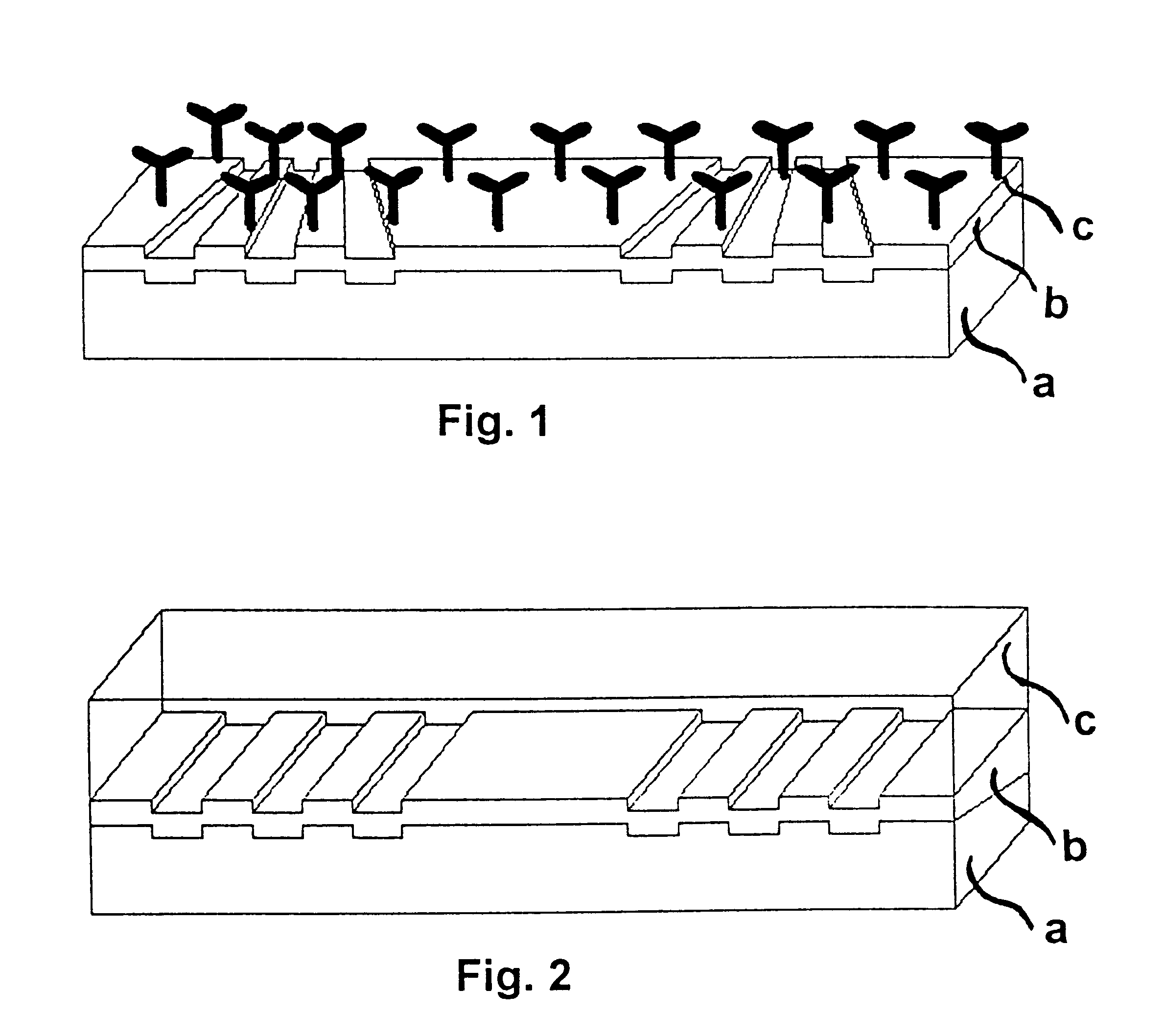Optical chemical/biochemical sensor
a technology of optical sensors and biological chemicals, applied in the direction of photometry, material testing goods, instruments, etc., can solve the problems of difficult or impossible evaluation, limited detection sensitivity, and insoluble in solvents
- Summary
- Abstract
- Description
- Claims
- Application Information
AI Technical Summary
Problems solved by technology
Method used
Image
Examples
Embodiment Construction
Optical system
The light source used is a helium-neon laser (.lambda.=632.8 nm, TM.sub.0 -mode, Uniphase, Manteca, USA), set using a projection system to a beam spot having a diameter in the sensor plane of 0.4 mm perpendicular to the lines of the coupling grating and 3 mm parallel to the grating lines.
Motorised adjusting units are used to set the coupling-in angle and to position the beam spot relative to the grating edge.
Linearly polarised light having TE or TM orientation, as desired, can be coupled in by means of rotatable polarising elements.
On the upper side of the sensor platform there is arranged a flow cell which is sealed with respect to the sensor by O-rings; the sample volume of this cell is approximately 20 .mu.l. Different solutions can be introduced into the cell by way of injection pumps and switch-over valves.
The detector used for detecting the position of the light pointer is a two-dimensional CCD camera (Sony XC-77CE) with 756.times.581 (horizontal.times.vertical) ...
PUM
| Property | Measurement | Unit |
|---|---|---|
| thickness | aaaaa | aaaaa |
| angle | aaaaa | aaaaa |
| angle | aaaaa | aaaaa |
Abstract
Description
Claims
Application Information
 Login to View More
Login to View More - R&D
- Intellectual Property
- Life Sciences
- Materials
- Tech Scout
- Unparalleled Data Quality
- Higher Quality Content
- 60% Fewer Hallucinations
Browse by: Latest US Patents, China's latest patents, Technical Efficacy Thesaurus, Application Domain, Technology Topic, Popular Technical Reports.
© 2025 PatSnap. All rights reserved.Legal|Privacy policy|Modern Slavery Act Transparency Statement|Sitemap|About US| Contact US: help@patsnap.com



